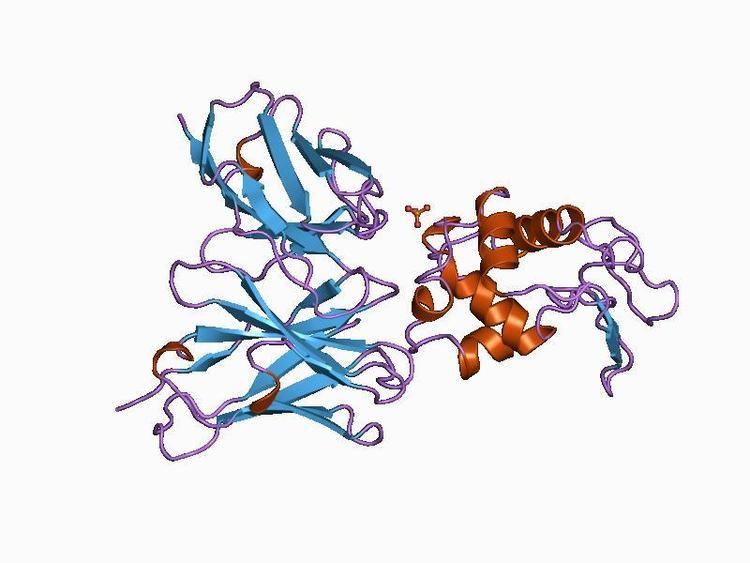Symbol IgSF Pfam clan CL0011 PROSITE PS50835 | Pfam PF00047 InterPro IPR013151 SCOP 1tlk | |
 | ||
The immunoglobulin superfamily (IgSF) is a large protein superfamily of cell surface and soluble proteins that are involved in the recognition, binding, or adhesion processes of cells. Molecules are categorized as members of this superfamily based on shared structural features with immunoglobulins (also known as antibodies); they all possess a domain known as an immunoglobulin domain or fold. Members of the IgSF include cell surface antigen receptors, co-receptors and co-stimulatory molecules of the immune system, molecules involved in antigen presentation to lymphocytes, cell adhesion molecules, certain cytokine receptors and intracellular muscle proteins. They are commonly associated with roles in the immune system. The sperm-specific protein Izumo, a member of the immunoglobulin superfamily, has also been identified as the only sperm membrane protein essential for sperm-egg fusion.
Contents
Immunoglobulin domains
Proteins of the IgSF possess a structural domain known as an immunoglobulin (Ig) domain. Ig domains are named after the immunoglobulin molecules. They contain about 70-110 amino acids and are categorized according to their size and function. Ig-domains possess a characteristic Ig-fold, which has a sandwich-like structure formed by two sheets of antiparallel beta strands. Interactions between hydrophobic amino acids on the inner side of the sandwich and highly conserved disulfide bonds formed between cysteine residues in the B and F strands, stabilize the Ig-fold. One end of the Ig domain has a section called the complementarity determining region that is important for the specificity of antibodies for their ligands. It is believed that the structure of variable subgenes of Ig and the surface immunoglobulin determine the propensity of chronic or tonic BCR signalling.
Classification
The Ig like domains can be classified as IgV, IgC1, IgC2, or IgI.
Most Ig domains are either variable (IgV) or constant (IgC).
Members of the immunoglobulin superfamily
The Ig domain was reported to be the most populous family of proteins in the human genome with 765 members identified. Members of the family can be found even in the bodies of animals with a simple physiological structure such as poriferan sponges. They have also been found in bacteria, where their presence is thought to be due to horizontal gene transfer.
